Cat breeds with blue eyes have always mesmerized cat lovers worldwide. Whether aqua or sapphire-blue, these cats have a unique charm. In this post, we’ll explore the cat breeds know for their blue eyes, delving into the genetics that result in these extraordinary felines.
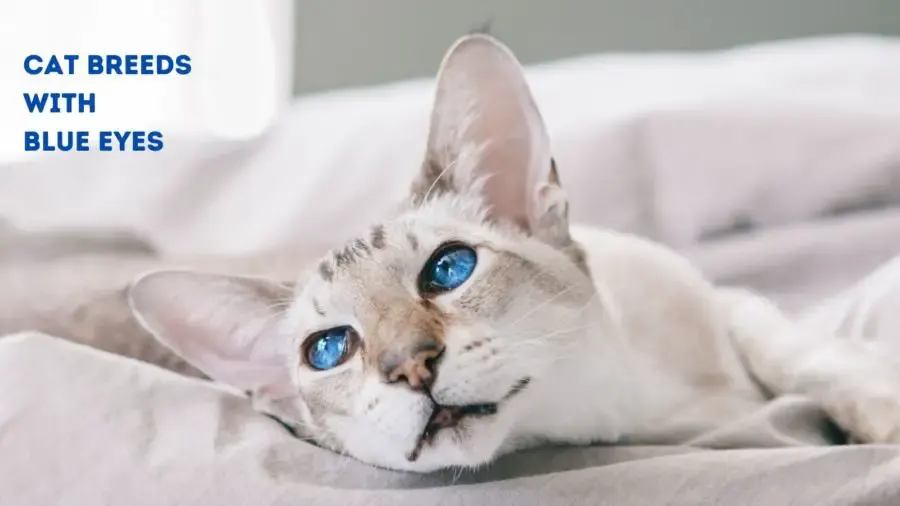
Why do some cats have blue eyes?
The blue eye color in cats, as in humans, is primarily determined by genetics. Blue eyes in cats are typically associated with specific coat colors or patterns, and it’s a result of a lack of pigmentation in the iris.
Here are some factors that can contribute to blue eyes in cats:
- Breed: Certain cat breeds are more likely to have blue eyes as a result of their genetics. Below we’ll look at each of the cat breeds that are best-known for their blue eyes.
- White Cats: White cats, regardless of breed, often have blue eyes. The white coat color is associated with a genetic condition that can lead to blue eyes because the lack of pigment in the fur can also affect the eyes.
- Albino or Colorpoint Patterns: Cats with albinism or colorpoint patterns are more likely to have blue eyes. In these cats, the gene responsible for pigmentation is affected, resulting in a lack of pigmentation in the iris and giving rise to blue eyes.
- Age: In some cases, kittens may be born with blue eyes that gradually change to their adult eye color as they grow older. This change in eye color is due to the development of pigmentation in the iris.
- Genetic Variability: The genetics of eye color in cats can be quite complex, and different genes can interact to produce a range of eye colors, including blue. It’s not solely dependent on a single gene but can be influenced by multiple genetic factors.
Related post: 275 Blue Eyed Cat Names for Your Aqua-Eyed Companion
Which Cat Breeds Have Blue Eyes?
Let’s have a look at the different cat breeds that are known for their striking blue eyes–and a few where blue eyes are a possibility.
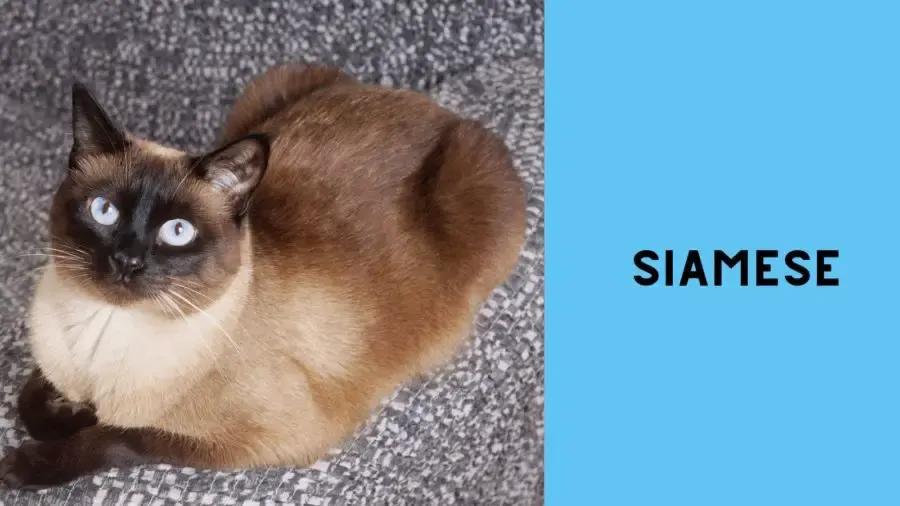
Siamese
Perhaps the most famous blue-eyed cat breed, Siamese cats are known for their striking blue almond-shaped eyes.
Siamese cats have a form of partial albinism known as “color-point albinism” or “Himalayan pattern.” This partial albinism affects the coloration of their fur and eyes.
Because of the partial albinism, Siamese cats don’t have the melanin to have eyes any color other than blue–because blue eyes are caused by a lack of pigment.
These cats also possess a specific gene that produces a temperature-sensitive enzyme called tyrosinase. Tyrosinase is involved in the production of pigment, and in Siamese cats, this gene is temperature-sensitive, meaning it becomes more active in cooler parts of the body and less active in warmer areas, creating the color point pattern. The body fur is warmer (and therefore lighter) and the temperature on their extremities is cooler (and the fur becomes darker).
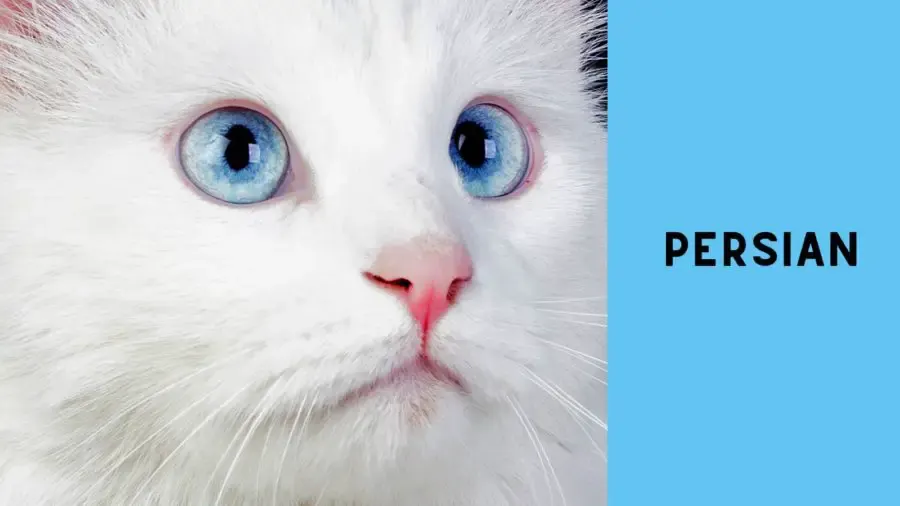
Persian
Persian cats, like many other cat breeds, can have blue eyes, but not all Persian cats have blue eyes. The eye color in cats, including Persians, is determined by genetics, just like in humans.
Blue eye color in cats is primarily determined by the presence of the white (W) gene. Cats with the white gene can have blue eyes or other eye colors, depending on their genetic makeup. Persian cats may carry this gene, which can result in blue eyes.
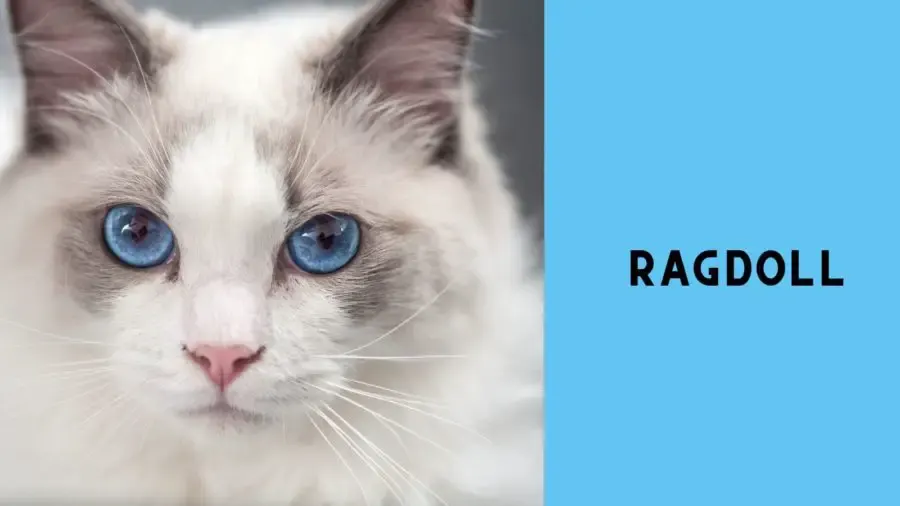
Ragdoll
These cats are known for their vibrant blue eyes and affectionate nature. All Ragdoll cats are born with blue eyes and most–although not all–retain those blue eyes into adulthood.

Himalayan
As a cross between Persian and Siamese cats, Himalayans often inherit the blue eyes from their Siamese lineage.

Birman
Also known as the “Sacred Cat of Burma,” these cats are recognized for their striking blue eyes and a coat that contrasts with their eye color. Like Siamese, those aqua eyes come from a lack of pigment.

Balinese
Often considered as the long-haired variant of the Siamese, the Balinese cat also has stunning blue eyes, which are a signature trait of the breed.
Balinese kittens are typically born with blue eyes, and their eye color may deepen and become more vibrant as they grow older.
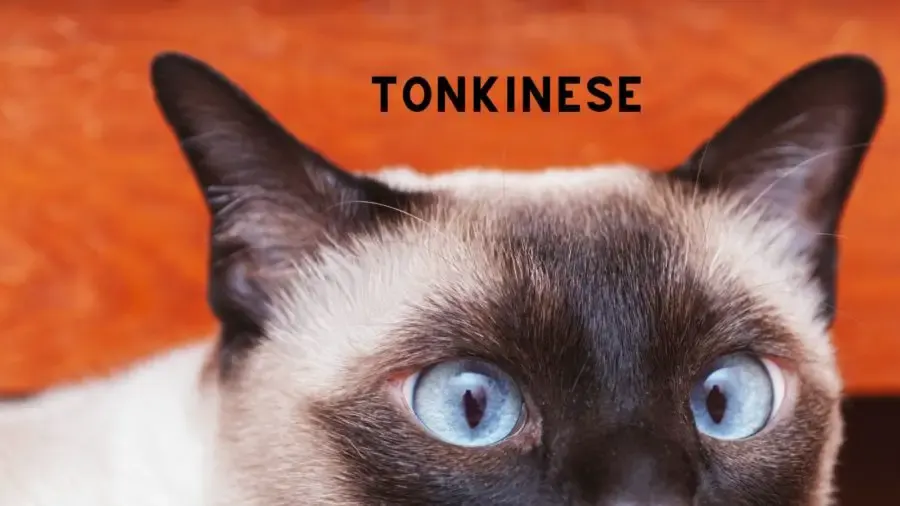
Tonkinese
This breed, a cross between the Siamese and Burmese, can have blue eyes, although they can also have green or aquamarine eyes depending on the exact genetic mix.
Some Tonkinese cats have blue eyes although many Tonkinese cats have green eyes or amber.

Javanese
Closely related to the Siamese and Balinese cats, the Javanese breed often exhibits captivating blue eyes. Javanese kittens are typically born with blue eyes, and their eye color may deepen and become more vibrant as they grow older.
However, just like other blue-eyed cat breeds, not all Javanese cats will have blue eyes. Some may have blue-green or green eyes, depending on their specific genetic makeup.
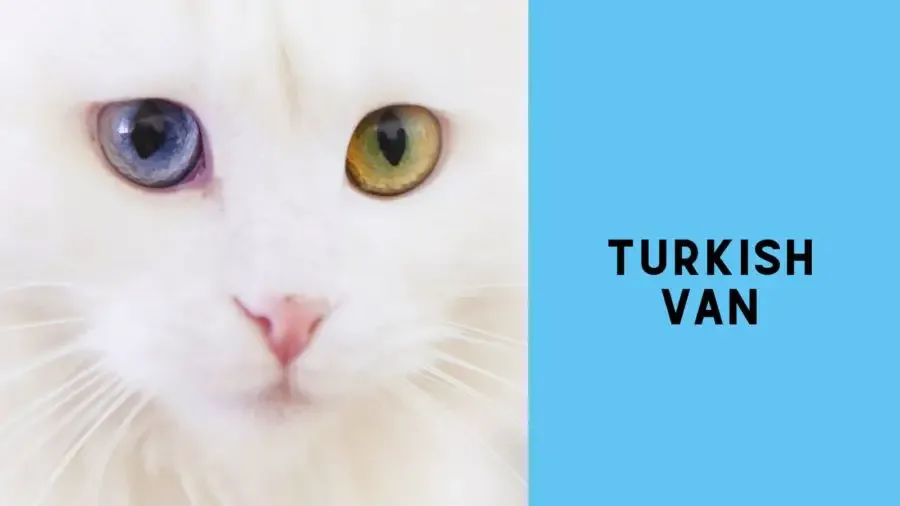
Turkish Van
This breed is known to sometimes have blue eyes, although it is also common to see individuals with one blue eye and one amber eye, a condition known as heterochromia.
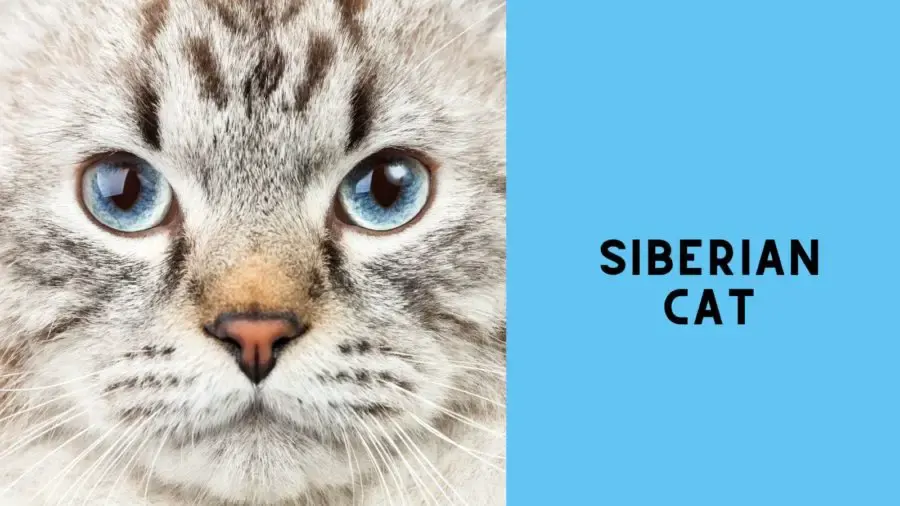
Siberian
While not as common, some Siberian cats, especially those with point coloration (similar to the Siamese), can have blue eyes. Blue eyes are usually associated with certain coat colors or patterns and are more often seen in kittens.
In some cases, Siberian cats may have heterochromia, which means they have two different colored eyes. This condition can result in one eye being blue while the other is a different color, such as green or amber.

Ojos Azules
This rare breed is notable for having blue eyes, even in individuals with non-pointed coat colors. The name “Ojos Azules” is Spanish for “blue eyes”. This is a genetic mutation; the Ojos Azules gene is a dominant gene, meaning that a cat needs only one copy of the gene to have blue eyes (and, in fact, when two Ojos Azules are bred together, serious birth deformities may occur in the kittens.)
Are Blue Eyes Associated with Health Concerns?
It’s essential to note that while blue eyes in cats are often admired for their beauty, they can be associated with certain health concerns, particularly in cats with a genetic predisposition to blue eyes due to albinism or certain colorpoint patterns.
Here are some potential health issues to be aware of:
Sensitivity to Light (Photophobia): Blue-eyed cats, especially those with albinism, may be more sensitive to bright light. Their lack of pigment in the iris can allow more light to enter the eye, which can cause discomfort or even damage to the sensitive structures inside the eye. It’s important to provide these cats with plenty of shade and avoid prolonged exposure to bright sunlight.
Vision Problems: Cats with blue eyes may have an increased risk of vision problems, including poor vision in low light conditions (night blindness) and reduced visual acuity. Albinism, in particular, can lead to abnormalities in the development of the eye, affecting the retina and optic nerve.
Increased Risk of Sunburn: The lack of pigment in the skin and fur of white cats, which often accompany blue eyes, can make them more susceptible to sunburn. Sunburned skin can be painful and increase the risk of skin cancer. It’s advisable to keep white or light-colored cats with blue eyes indoors during peak sunlight hours or provide them with sun protection if they are outside.
Increased Risk of Eye Conditions: Blue-eyed cats may be more prone to certain eye conditions, such as cataracts and glaucoma. Regular veterinary check-ups are essential to monitor their eye health and detect any issues early.
Deafness: In some cases, blue-eyed cats with a predominantly white coat (often referred to as “white cats”) can be more prone to congenital deafness. The gene responsible for the white coat color can also affect the development of the inner ear, leading to hearing impairment.
It’s important to note that not all blue-eyed cats will experience these health concerns, and many blue-eyed cats live healthy lives without significant issues.
Related Posts
Lynx Point Siamese Cat: The Mysterious Mix of Wild Looks and Gentle Nature
- 🎉 GIVEAWAY: Lord of the Pets Portrait of Your Cat! - November 26, 2024
- Review: Lord of the Pets Cat Portraits! - November 26, 2024
- Cat Adoption: FAQ You Might Have - June 28, 2024
